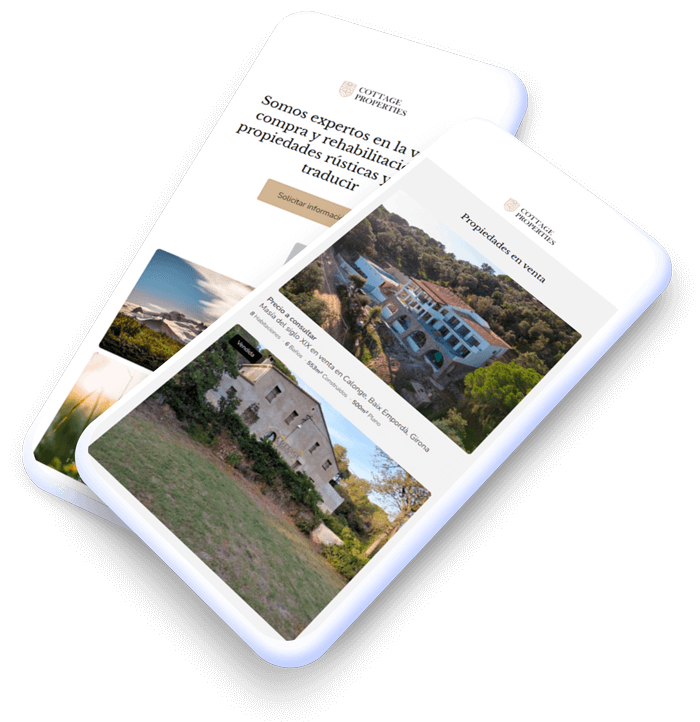Restoration of farmhouses: steps to revive their historical beauty
Restoring farmhouses, those beautiful rural homes in the midst of nature, can be an exciting and rewarding project. Not only do you have the opportunity to revive a piece of history, but you can also integrate modern comforts to create a unique and personal space.

Historic farmhouses are an important attraction for those looking for a new home to renovate. Hundreds of estates with much history inhabit the countryside, waiting to be projected into a new life. The process of rehabilitating these farmhouses is exciting and enriching, enjoying materializing dreams into a custom-made new home.
To ensure that the process meets the necessary and indispensable requirements, there are several steps that must be rigorously followed. Here we offer you a step-by-step guide on how to approach the restoration of a farmhouse, maintaining its historical essence while adapting to contemporary needs.
Step 1: Planning and permits
The preliminary study is essential when starting the rehabilitation of a farmhouse: it is necessary to assess its state of conservation, understand the structure of the facilities, the environment, and the original materials, among others. It is also necessary to know the construction regulations and restrictions established in the area or region to be able to plan the renovation properly.
In addition, it is important to manage the permits related to the project as soon as possible, depending on the location and magnitude of the rehabilitation, to avoid legal problems later.
Research: Learn about the architectural style and traditional materials of the farmhouses in the region to ensure your restoration is authentic.
Permits: Depending on the location and scope of the project, you may need several permits. Make sure to manage them before starting any work to avoid legal issues.
Step 2: Maintaining the historical character
The rehabilitation of farmhouses and estates always seeks to maintain the historical character of the original facilities, creating spaces that have the current comforts and needs. That is why the found materials and the initial structures are preserved, which help maintain their essence.
Some of the elements that are usually preserved in the rehabilitation of farmhouses are wooden beams, pillars, arches, tiles, porches, and stone walls; in addition to antique furniture that can also be restored to maintain the authenticity of the spaces.
Authentic Materials: Use local materials and traditional techniques whenever possible. This is not only more authentic but also helps maintain the structural integrity of the farmhouse.
Respect for the Original: Try to preserve as many original elements as possible.
Step 3: Integration of modernities
To link an old farmhouse with modernity and the needs of the present, it is essential to create healthy, biocompatible, and sustainable spaces that significantly improve the quality of life of the people living in them.
It is essential to incorporate a series of current elements and technologies to facilitate living within the home and promote its energy efficiency. Some of these are the installation of solar panels, direct entry of natural light, the use of LED lights and efficient appliances, and the efficient heating system, among others.
Installations: Consider updating the electrical, plumbing, and heating installations. This must be done carefully so as not to alter the historical structure.
Contemporary comfort: Incorporate insulation, double-glazed windows, and modern technology discreetly to improve energy efficiency and comfort without compromising the rustic style.
Step 4: Counting on rehabilitation experts
Relying on a team of professionals and experts in farmhouse rehabilitation is a key factor in achieving dream transformations and results. In addition, it will help you avoid common mistakes.
Professional consulting: Consider hiring an architect or historian with experience in farmhouses to advise you during the restoration process.
Inspiring visits: Visit other farmhouses that have been restored to gain inspiration and new ideas.
At Cottage Properties, we have over 30 years of experience leading, designing, and managing large-scale projects to meet all needs, dreams, and expectations. Accompanying each of our clients from the first step to the last.
The rehabilitation of a farmhouse is a process we live with excitement, turning our dreams into reality, an exciting journey that culminates in a spectacular home, full of history and character. With proper study and planning, respect for tradition, and the incorporation of modern technologies and comforts, your future farmhouse will become a link between the past and the present, made to measure.
We hope these tips and advice help you navigate the restoration process of your farmhouse with confidence. Happy restoration!
Post published 26/06/2024
